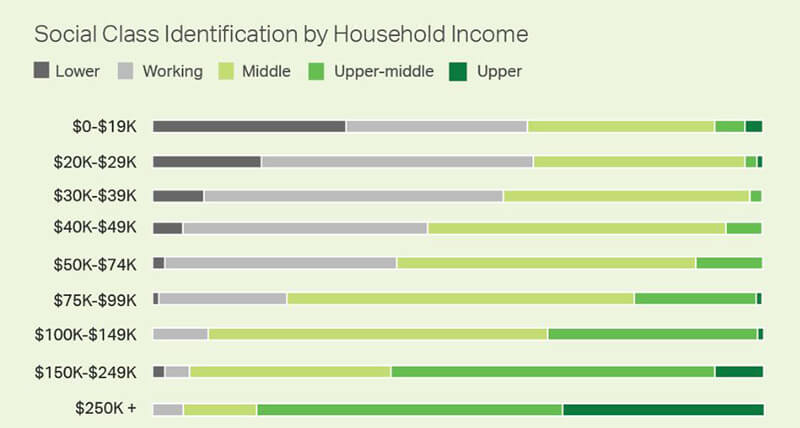what are the 5 social classes
The term”course” appended after phrases such as”functioning,””judgment,””reduced” and”top” is really a shorthand way to explain such hierarchical steps, but using generally vague conceptions of what these phrases mean.
A concentrate on objective social course entails an immediate determination of an individual’s social category based on socioeconomic factors — largely income, wealth, education, and job. Another approach to the group, the one which occupies us, deals with how folks put themselves. That can be abstract social category — an approach which has its own difficulties but helps clarify class from the view of those folks. This is important because the way that people define a scenario has consequences because of its own outcome.
Gallup has, for quite a few years, asked Americans to put themselves — with no advice — to five categories: upper, upper-middle, center, lower and working. These five-course tags are representative of their approach used in speech that is and from researchers. Gallup’s final evaluation revealed that 3 percent of Americans identified themselves as upper class, 15 percent as upper-middle course, 43 percent as a middle course, 30 percent as working-class, and 8 percent as lower course — with noticed changes in those self-categorizations as time passes.
What goes into deciding the course? We can not quantify all variables associated with course self-placement, for example, particularly, family history and heritage, prestige of space, behavior concerning family circumstance and clothing, cars, homes, manners, spouses. However, we could take a look at also a record of demographic and socioeconomic factors included in an aggregation of three Gallup surveys and the connection between class positioning. This analysis controls allowing us to pinpoint the effect of each factor on category identification.
Income is a determinant of their class to which individuals put themselves, as is, to a level, schooling as we’d expect.
Americans’ political party identification once the factors are controlled for.
The chart shows the relationship between social categories and income. It is based on the evaluation of the totality of each factor simultaneously; the information would be the screen of category identification at every income level.
- In the bottom level of annual household income contained in this research (under $20,000 annually ), individuals are likely to identify as”reduced,””functioning” and”middle”
- Identification as course drops as income grows, whilst identification as middle and working-class growth. Working-class is wider than the course.
- We see a switch folks at the level become not as inclined to state they’re working class and prone to state they’re middle class.
- Working course identification shrinks at the 75,000-$99,000 annual revenue amount. Middle course dominates, but the upper-middle course gets somewhat overriding.
- $150,000 is your income level where upper-middle course becomes the dominant class identification — with nearly all those who don’t select upper-middle course.
There are individuals in our survey that say that they make $500,000 per year or longer, and of the group — maybe not represented in the graph due to small sample sizes — just about half say they are class. The majority of the rest recognize as upper-middle course.
The largest impact of schooling on subjective social course comes in the college graduate level, where stage working-class identification drops considerably, with a concomitant growth in identification as upper-middle course. As working-class at any given 11, Greater than half identify.
The largest impact of an era comes from people who are 65 and older, who are far more inclined to identify with a greater social group compared with younger individuals.
Individuals living in rural regions are not as inclined to spot in a higher social group in comparison with people residing in suburban and urban places.
While there could be an upper class in Western society and a course now, relatively few Americans in any given education or income degree like to consider these. Americans with socioeconomic status are equally as likely to view themselves at the class as from the course, whereas Americans with standing view themselves at the upper-middle course instead of the course.
The information supports the conception of a point in the college graduate level between people that are not and those people who are currently working class. As the working-class, less than 40 percent of Americans with no college diploma identify. For all those that have some college education or a high school diploma course advantages out of the working class, while for individuals with less than high school education, most identify as either lower or middle class. In a nutshell, Americans’ resonance using the tag” working class” isn’t quite as substantial as may have been anticipated, even for individuals without college degrees.
The truth is that social class does not impact is vital, given the significance of partisanship. For individuals with the exact same socioeconomic and demographic traits, To put it differently, being a Democrat does not make one more inclined than being a Republican as working to spot class.
